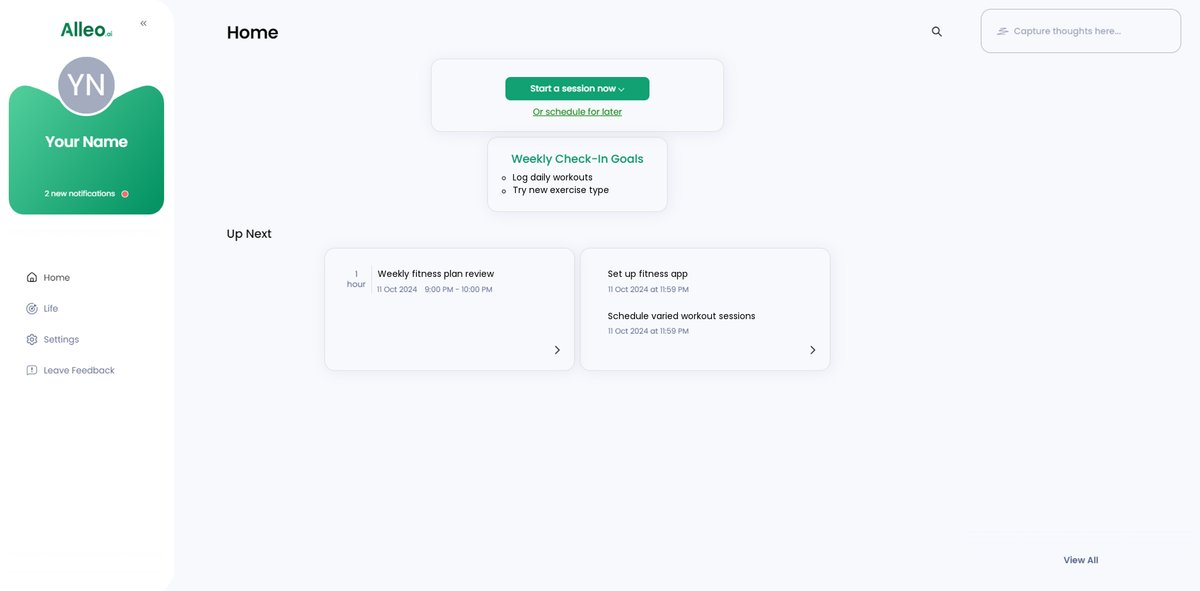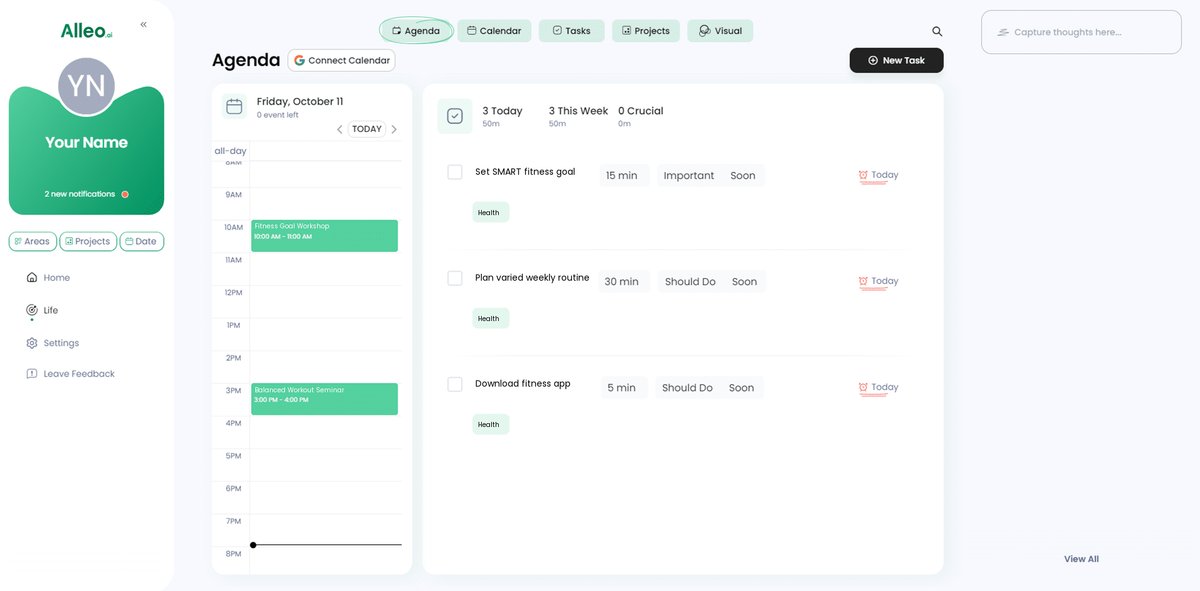How to Set Realistic Fitness Goals for Balanced Physical Development: 4 Essential Strategies
Are you struggling to set realistic balanced fitness goals that lead to balanced physical development?
As a life coach, I understand the frustration of navigating conflicting fitness advice and the fear of imbalanced results or injury when creating full-body fitness plans.
In this article, you’ll discover practical strategies to set SMART fitness goals, incorporate varied exercises for strength and cardio balance, use fitness tracking apps for monitoring progress, and gradually increase intensity through progressive overload techniques.
Let’s dive into setting realistic balanced fitness goals.

Understanding the Challenges of Setting Realistic Fitness Goals
One of the biggest problems in setting realistic balanced fitness goals is the overwhelming amount of conflicting advice. Many clients initially struggle with knowing where to start and what SMART fitness goals are achievable.
For beginners or those returning after a break, unrealistic goals can lead to disappointment and injury. Too often, people aim too high too quickly, leading to frustration and burnout when implementing progressive overload techniques.
Additionally, imbalanced physical development can cause injuries and decrease motivation. For example, focusing solely on upper body strength while neglecting lower body workouts can create muscle imbalances, highlighting the importance of balanced workout routines.
Confusion and frustration are common when sifting through varied fitness advice. It’s easy to get lost and feel uncertain about what’s best for your body when trying to create full-body fitness plans.
But remember, the journey is as important as the destination when setting realistic balanced fitness goals.

Key Strategies for Realistic Fitness Goals and Balanced Physical Development
Overcoming the challenge of imbalanced physical development requires a few key steps. Here are the main areas to focus on when setting realistic balanced fitness goals:
- Set SMART goals for balanced physical development: Create specific, measurable, and time-bound SMART fitness goals for full-body fitness plans.
- Incorporate varied exercises for all muscle groups: Mix strength and cardio balance, flexibility and mobility goals in balanced workout routines.
- Use a fitness tracking app to monitor progress: Track workouts and analyze data for insights on tracking fitness progress.
- Gradually increase intensity to prevent injury: Follow progressive overload techniques and listen to your body for long-term fitness sustainability.
Let’s dive in!
1: Set SMART goals for balanced physical development
Setting realistic balanced fitness goals is crucial for balanced physical development and preventing injury. Implementing SMART fitness goals can help you achieve a well-rounded approach to your fitness journey.
Actionable Steps:
- Define specific muscle groups to target each week. Plan your balanced workout routines to ensure you address each major muscle group regularly in your full-body fitness plans.
- Set measurable milestones, like increasing weights or reps in strength training. Track your fitness progress to stay motivated and focused, implementing progressive overload techniques.
- Break down long-term goals into smaller, achievable steps. Ensure your goals are realistic based on your current fitness level, considering both strength and cardio balance.
Explanation: These steps matter because they provide a structured approach to achieving your fitness goals, preventing imbalances, and reducing the risk of injury. Setting realistic balanced fitness goals helps in maintaining long-term fitness sustainability.
According to the Harvard Health, a well-rounded fitness routine that includes varied exercises is essential for overall health. This method also supports gradual progression, which is key to sustainable fitness success.
Taking these steps ensures a balanced approach to fitness, setting you up for long-term success and well-being. Remember to consider flexibility and mobility goals, nutrition for physical development, and rest and recovery strategies in your overall plan.

2: Incorporate varied exercises for all muscle groups
Incorporating various exercises ensures balanced development and prevents workout monotony when setting realistic balanced fitness goals.
Actionable Steps:
- Alternate between strength training, cardio, flexibility, and balance exercises. Plan weekly routines that include different types of exercises to engage all muscle groups, creating balanced workout routines.
- Rotate exercises to prevent overuse injuries. For example, mix weightlifting with yoga or Pilates to enhance flexibility and mobility goals.
- Try new fitness classes or sports. This keeps workouts exciting and challenges different muscles, supporting full-body fitness plans.
Key benefits of varied exercises include:
- Enhanced overall fitness
- Reduced risk of plateaus
- Improved motivation and enjoyment
Explanation: Combining different workouts is essential for overall fitness and injury prevention when setting realistic balanced fitness goals.
According to Harvard Health, a balanced regimen that includes strength, cardio, and flexibility exercises promotes comprehensive physical health.
This approach also supports gradual progress and keeps your routine fresh and engaging, aiding in tracking fitness progress.
By integrating varied exercises, you ensure a holistic approach to fitness, leading to sustainable progress and reduced injury risks, contributing to long-term fitness sustainability.
3: Use a fitness tracking app to monitor progress
Utilizing a fitness tracking app is essential for monitoring progress and staying motivated in your fitness journey, especially when setting realistic balanced fitness goals.
Actionable Steps:
- Log your exercises, sets, reps, and weights. Track each workout to see improvements over time and stay consistent with your balanced workout routines.
- Analyze weekly and monthly summaries. Review data to identify patterns and adjust your full-body fitness plans based on trends, incorporating progressive overload techniques.
- Set reminders for your workouts. Schedule sessions and receive alerts to ensure you stick to your routine, maintaining a strength and cardio balance.
Explanation: These steps are crucial because they provide a structured way to monitor progress and make informed adjustments to your SMART fitness goals.
According to Doodle, tracking activities and setting reminders can significantly contribute to maintaining a diverse and effective workout routine. This helps in achieving balanced physical development and avoiding plateaus while ensuring long-term fitness sustainability.
By using a fitness tracking app, you can stay on top of your fitness goals and make necessary changes for continuous improvement, focusing on flexibility and mobility goals alongside strength training.

4: Gradually increase intensity to prevent injury
Gradually increasing intensity is crucial for preventing injuries and ensuring sustainable progress when setting realistic balanced fitness goals.
Actionable Steps:
- Follow a progressive overload principle. Gradually increase weights, reps, or duration of exercises to build strength without overloading your body, a key aspect of tracking fitness progress.
- Listen to your body’s signals. Pay attention to signs of fatigue or discomfort, and incorporate rest and recovery strategies for muscle recovery.
- Seek professional guidance. Consult with fitness trainers or physiotherapists to ensure proper form and technique in your balanced workout routines.
Signs you’re progressing safely:
- Consistent energy levels
- Improved performance
- Minimal post-workout soreness
Explanation: These steps help you avoid injuries while making steady progress. According to Cleveland Clinic, progressive overload techniques and professional guidance are key to safe and effective workouts.
This structured approach ensures you build strength gradually and sustainably, aligning with your SMART fitness goals.
Remember, taking it slow is better than risking injury and setbacks when setting realistic balanced fitness goals.

Partner with Alleo on Your Fitness Journey
We’ve explored the challenges of setting realistic balanced fitness goals and achieving balanced physical development. But did you know you can work directly with Alleo to make this journey easier and faster?
Setting up an account with Alleo is simple. Start with a free 14-day trial, no credit card needed. This gives you time to explore our full-body fitness plans and progressive overload techniques.
Create a personalized plan tailored to your fitness goals. Alleo’s AI coach provides full coaching sessions, just like a human coach, helping you develop SMART fitness goals and balanced workout routines.
The coach will follow up on your progress, handle changes, and keep you accountable via text and push notifications. This support is crucial for tracking fitness progress and maintaining a strength and cardio balance.
Ready to get started for free? Let me show you how to begin setting realistic balanced fitness goals with Alleo!
Step 1: Log In or Create Your Account
To begin your fitness journey with personalized AI coaching, Log in to your account or create a new one to access tailored workout plans and progress tracking.

Step 2: Choose “Building better habits and routines”
Click on “Building better habits and routines” to address the core challenge of creating a balanced fitness routine, as this aligns with your goal of setting realistic fitness targets and incorporating varied exercises for overall physical development.

Step 3: Select “Health” as Your Focus Area
Choose “Health” as your primary focus area in Alleo to align with your fitness goals, allowing the AI coach to provide tailored guidance on balanced physical development, injury prevention, and sustainable progress in your workout routine.

Step 4: Starting a Coaching Session
Begin your fitness journey with Alleo by initiating an intake session, where you’ll collaborate with the AI coach to establish your personalized fitness plan, aligning with the balanced physical development goals discussed in the article.

Step 5: Viewing and managing goals after the session
After your coaching session, check the app’s home page to view and manage the fitness goals you discussed, allowing you to track your progress and stay aligned with your balanced physical development plan.

Step 6: Adding events to your calendar or app
Use the Alleo app’s calendar feature to schedule your workouts and track your progress, ensuring you stay on top of your balanced fitness routine and can easily monitor your achievements over time.

Wrapping Up Your Fitness Journey
We’ve covered a lot, from setting SMART fitness goals to using fitness tracking apps for monitoring your progress.
I know it can be overwhelming at times, but remember, you’re not alone in setting realistic balanced fitness goals.
You now have the tools to create a balanced workout routine and prevent injuries through proper rest and recovery strategies.
By following these strategies, you’ll make steady progress and stay motivated with your full-body fitness plans.
Consistency and variety are key to your success in maintaining a strength and cardio balance.
Don’t forget to celebrate your small victories along the way as you work towards long-term fitness sustainability.
Finally, consider using Alleo to support your journey in tracking fitness progress.
It’s a free 14-day trial, and it can make all the difference in achieving your balanced workout routines.
Ready to transform your fitness routine with progressive overload techniques?
Let’s get started on setting realistic balanced fitness goals!